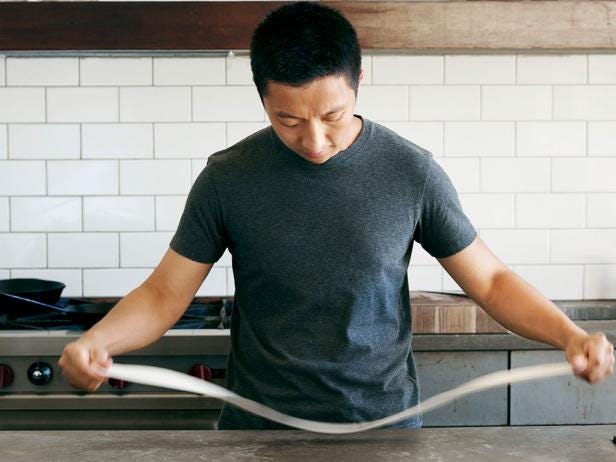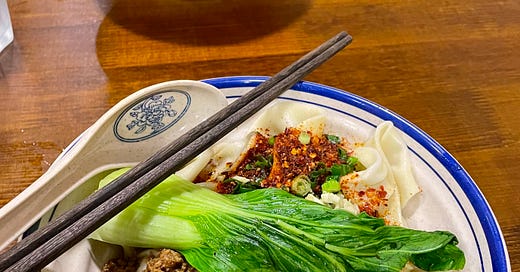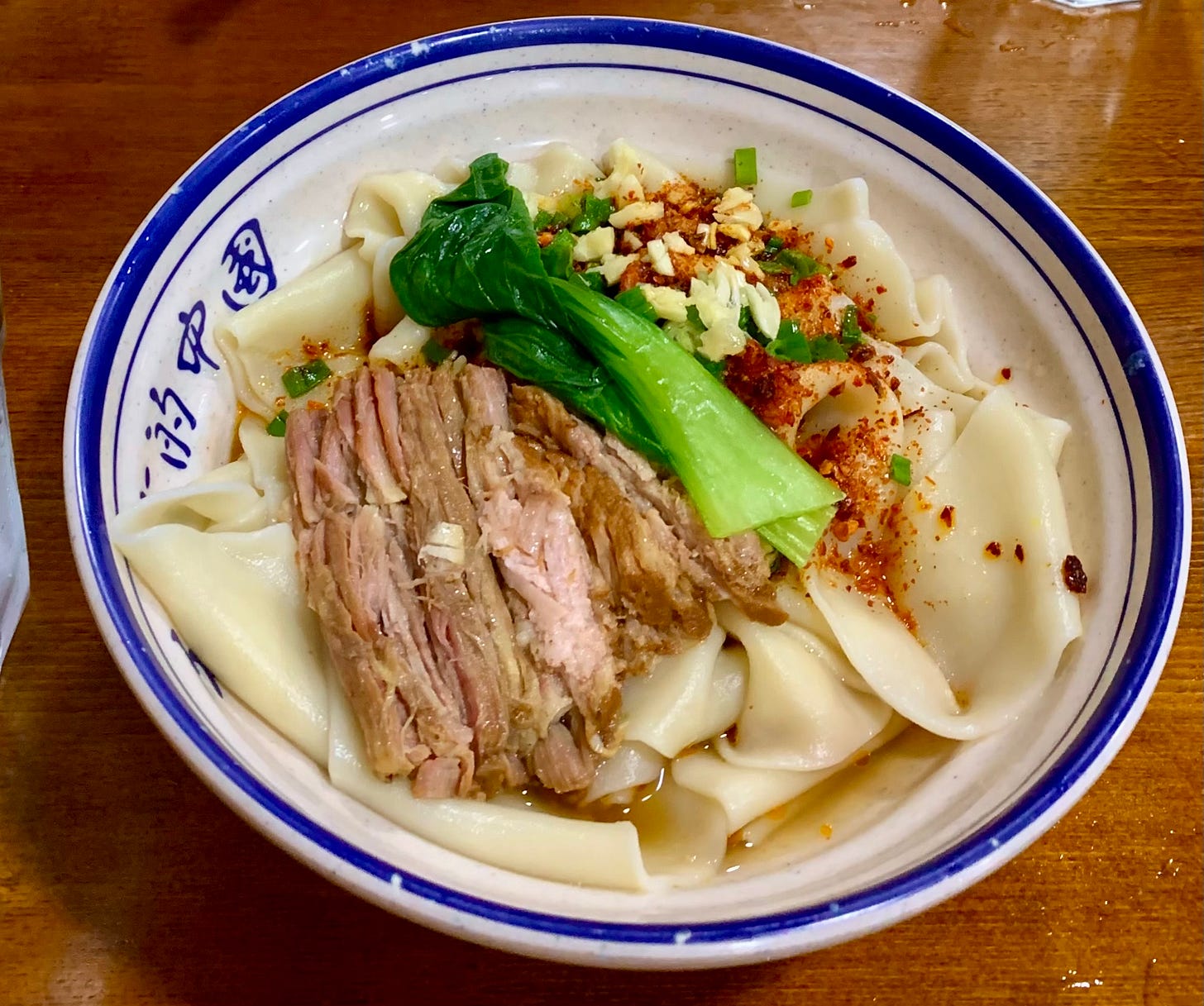It only feels right that my first post is dedicated to one of my favourite foods ever, biang-biang mian, just like my first ever post on my foodie instagram account. In my opinion no other noodle dish comes close to how many different kinds of flavours there are in one singular bowl, especially one not from the South East Asia region. I have to thank a close friend for introducing me to this dish.
The history
The specialty is for the most part unknown in even other parts of China outside the Shaanxi Province. This particular northwestern region has a unique flavour profile to their local delicacies. They meld together the spiciness and sourness of Sichuan food to the south, and the salty and strong flavoured foods of Shanxi, to the north.
They are a wide, hand-pulled type of noodle, sometimes known as belt noodles. The word itself is an onomatopoeia of the sounds that the noodles make whilst being slapped on the surface when stretched. In Mandarin there are several iterations of the character, each have between 55 to 70 strokes, and was only properly codified for the computer a few years ago in 2020.

It was thought to be invented during the Qin Dynasty centuries ago. The origin story depends on the sources as there are different ones depending on who you ask. Wheat products tend to be more popular in this drier region of China where growing rice crops are comparatively harder than in the southern regions. Other well known dishes include ròu jiā mó (肉夹馍) and pao mou (羊肉泡馍) where the bread plays the starring role.
The dish itself

In it’s most basic form, it is boiled noodles with a green veg, some aromatics (generally garlic, spring onion and chilli flakes) with some vinegar and hot oil will be poured on top right before serving. There are usually chilli oil and black vinegar on the table to add at the eaters discretion, which is highly recommended. Different places will offer a variety of toppings in addition to its core ingredients to make it a more filling meal, like the one shown below.

My personal favourite is the zhájiàng ròu (炸醬肉) and the vegetable medley, with extra spoonfuls of chilli oil and lashings of black vinegar. It tastes like an explosion of flavours in the mouth. For any SEAs out there reading this who have yet to try this, please do! The harmony of well-balanced flavours remind me of dishes I ate growing up where, there wasn’t just one note. It’s sweet, salty, spicy and umami, but this originated thousands of kilometres away.
Why you should try it
If you love spaghetti bolognese or ragu’ alla bolognese (if you wanna be proper), especially if you love the Pappardelle and Malfalda/Mafaldine pasta shape. The properties of it are kind of similar, especially if you get certain toppings to it. Instead of the acid coming from the tomatoes (which you can get if you order the tomato egg topping), they come from the black vinegar used. There is also that rich and deep flavour the comes from the garlic and freshly splashed oil.
If you aren’t keen on soupy noodles and don’t feel like having fried noodles either, this is a perfect medium. In addition to having noodles prepared in this format, they retain their ‘QQ1’ texture! The noodles aren’t drowning in the broth, nor are they weighed down by being fried, which make it perfect for any season IMO.
If you like to customise your noodles this is perfect as there are many possible combinations to this, you are only limited to what the restaurant has to offer. Examples include shredded meats, tomato and egg and sometimes there is even an option to upsize the noodles for FREE. I would highly suggest you to upsize if you intend on getting extra toppings.
In conclusion….
IT DESERVES ALL THE HYPE! I must say I’m quite sad that I have only discovered it recently, and and in general this entire region has unlocked a whole new treasure trove of other dishes too. Some which I hope to share about in future posts as I slowly discover them myself. So please do yourself a favour, next time you feel like going out for spicy noodles give this dish a chance if you haven’t already, I personally don’t know anyone who’s tried this and hasn’t liked it, feel free to tell me if I’m wrong.






LOVE BIANG BIANG MIAN 👍👍😋